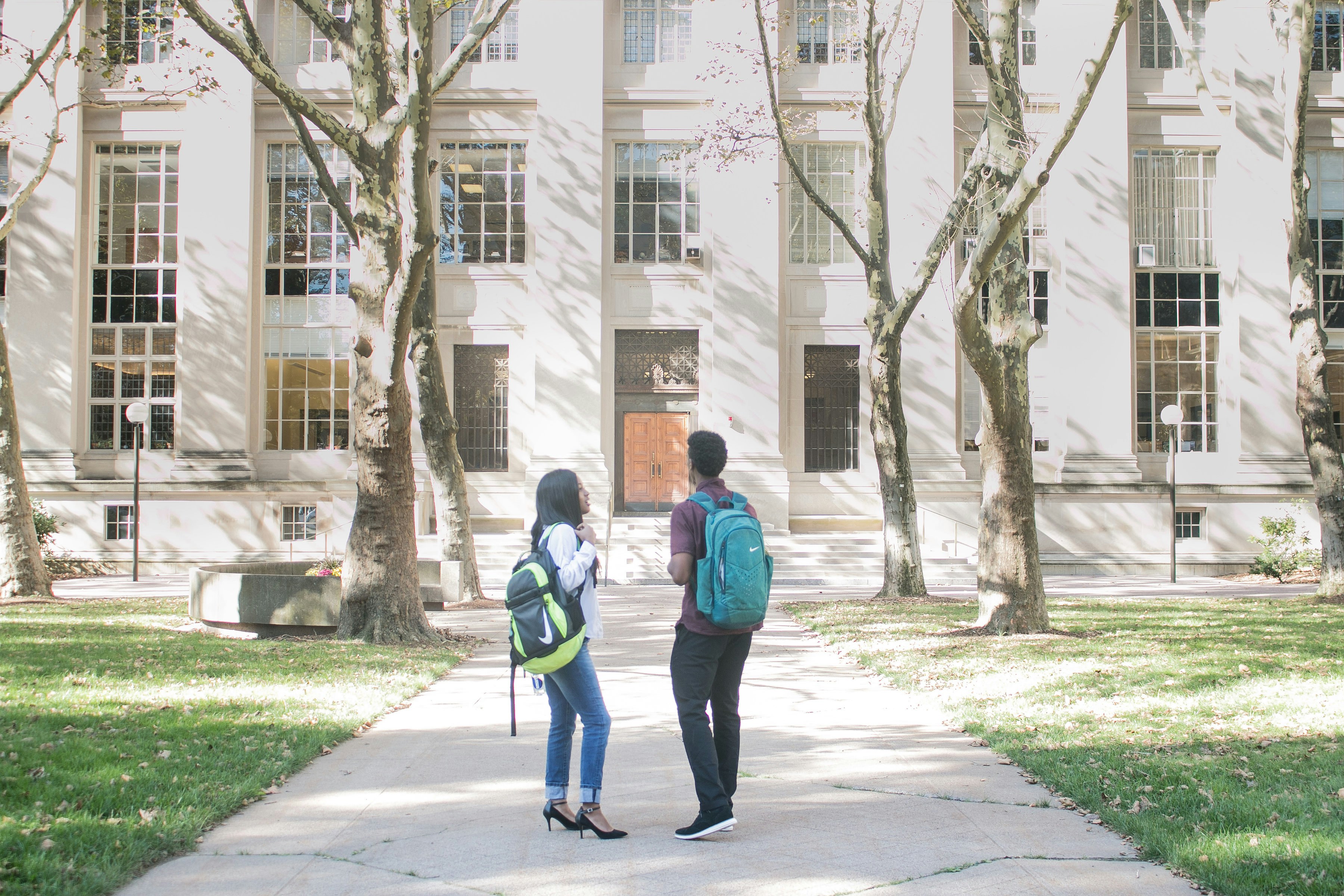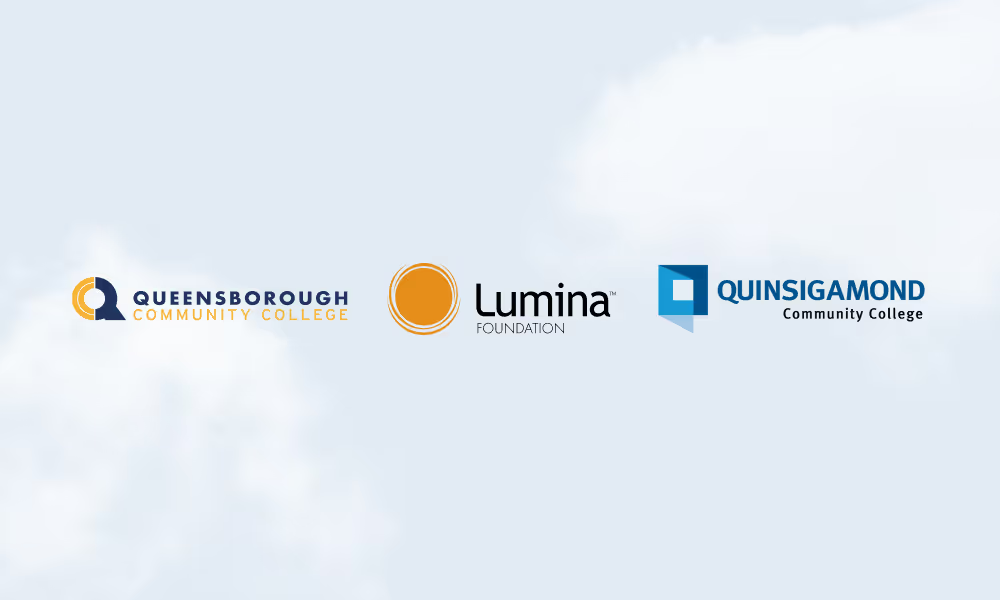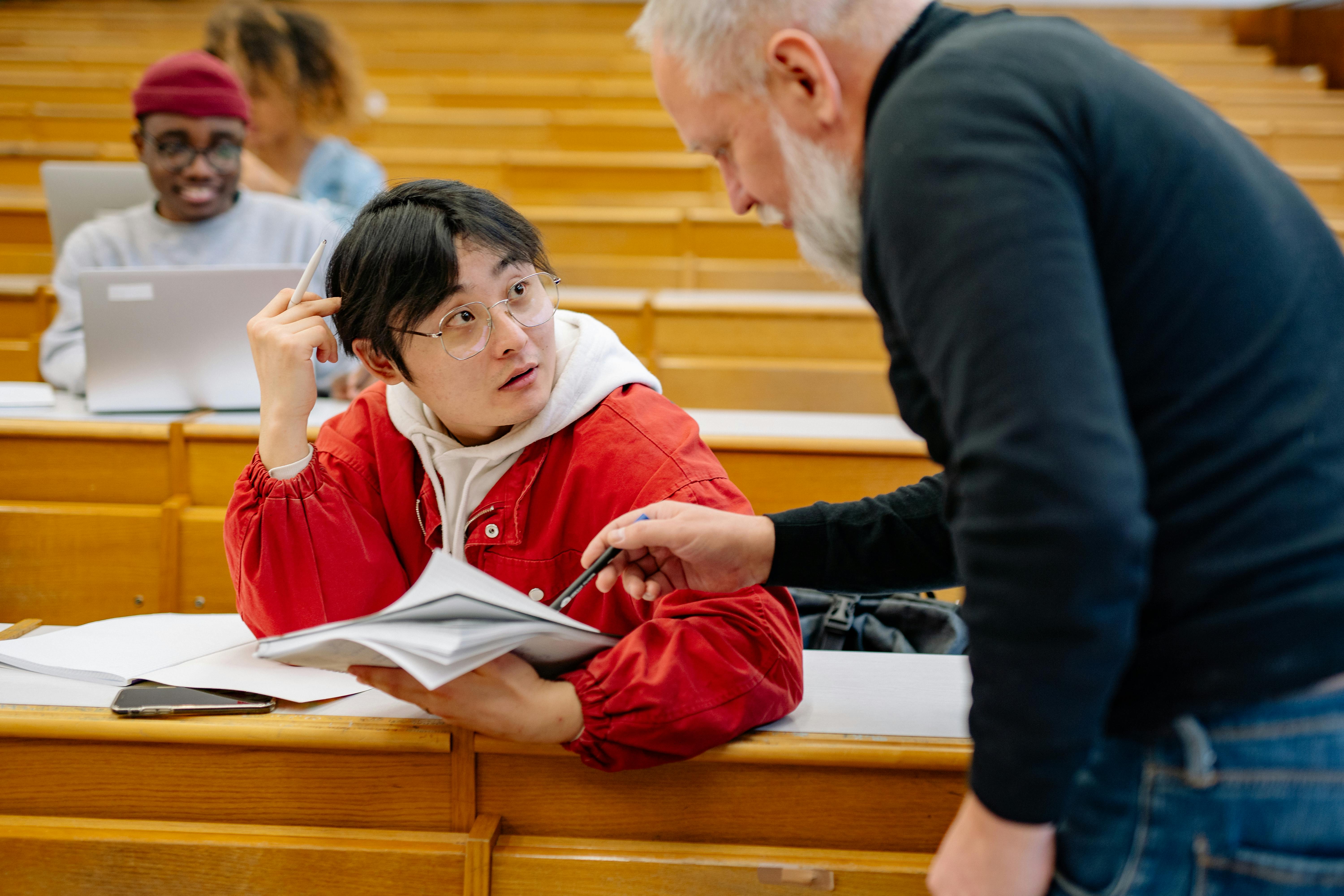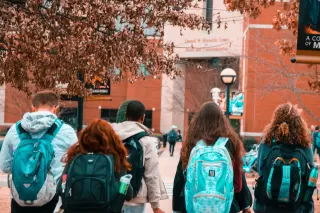October 16, 2025
Designing Continuous Enrollment for Community Colleges
Persistence Plus is exploring how behavioral science can help students stay enrolled continuously until they finish their credential.

Ross E O’Hara, Ph.D.
About

Continuous Enrollment is a retention strategy focused on uninterrupted enrollment until students finish their credential
Changing the choice architecture of higher education, including default options, could have a large impact on retention
Lessons learned from this project include the value of gathering the right leaders together and the importance of class availability and scheduling
This week, Persistence Plus announced an innovative project, funded by Lumina Foundation, to build a scalable model that promotes students’ Continuous Enrollment through community college to a credential. I’m thrilled to lead this collaborative effort between Persistence Plus, Queensborough Community College, and Quinsigamond Community College. As we embark on this two-year journey together,I want to share where we’re headed and what we’ve already learned.
What is Continuous Enrollment?
Taking a break from college, although sometimes unavoidable, threatens students’ likelihood of graduating and delays the benefits of a credential. Academic momentum is one of the most robust predictors of college completion, a relation that strengthens with students’ age (Bahr, Boeck, Chen,& Clasing-Manquian, 2024). Several ongoing initiatives seek to create and sustain momentum, such as encouraging full-time enrollment (e.g., 15 to Finish; CUNY ASAP) and shorter, accelerated courses.The goal is to help students complete a credential quickly before life finds away to disrupt their education.
Continuous Enrollment, however, is a retention strategy that leverages behavioral science to change college processes, structures and mindsets to facilitate and support uninterrupted student enrollment. Our systems approach to enrollment aims to maintain academic momentum while staying adaptable to the unique needs of students and institutions. First, we’re asking how processes can be simplified, streamlined, and automated to promote students returning each term. Second, we want to determine how changes to structures and communications can normalize staying enrolled year-round until a program is complete.
What is the Science behind Continuous Enrollment?
The inspiration for this work comes from research on behavioral defaults (Jachimowicz, Duncan, Weber, & Johnson, 2019; Mertens, Herberz, Hahnel, & Brosch, 2022). People tend to accept the option defaulted for them, even when it’s easy to choose an alternative. For example, less than 2% of hires in South Dakota public colleges and universities enrolled in the state’s supplemental retirement plan before the state began automatically enrolling new employees into the system. After switching to opt-out enrollment, participation rose to nearly 98% (Clark & Pelletier, 2019).
Defaults are just one element of “choice architecture”: the policies and procedures for how people (students) gain access to resources. Too often in higher education we make students sign up for resources without a second thought to the alternatives. In this project, we’ll challenge this status quo and find places where changing choice architecture could shift students’ decisions and promote persistence. A promising example comes from a community college in the Pacific Northwest, where incoming full-time students were given pre-made schedules that included introductory English and math. This college found that these “opt-out schedules” built academic momentum, with students more likely to return for a second term and earning credits at a faster pace (Wilson 2022; 2024).
What Have we Learned about Continuous Enrollment?
We are underway with this work and have already identified several opportunities and challenges to Continuous Enrollment that will guide the direction of this project.
- The right project at the right time. I’ve spent months speaking with experts and practitioners, and there have been two constants in those conversations: excitement and trepidation. Universally, people believe this is a great time to expand upon the work of Complete College America, Guided Pathways, and the Great Admissions Redesign to create streamlined paths through college to a credential. Continuous Enrollment also feels necessary as enrollments rapidly grow due to new state programs offering free community college. Although we have identified several challenges to the success of Continuous Enrollment, we seek to remedy those as we build toward an implementation pilot.
- Getting everybody in the room. Shifting the default to continuous enrollment touches on perhaps every area of higher education: advising, financial aid, academic scheduling, and IT. The first challenge for any institution tackling this work is identifying all the people needed for the conversation and forging a shared understanding of the process and goals. We recently hosted all-day kickoff meetings at both Queensborough and Quinsigamond to start this collaborative process on the right foot. Yet we’re still identifying voices that need to be included in these conversations.
- Intentionality of choice architecture. A mantra for this project is “we are all choice architects,” meaning we all make critical decisions about student engagement and success, consciously or not, when we decide how to grant access to programs and resources. During our kickoff meetings, I asked participants to list everything that students at their college opt into, followed by everything that uses opt-out enrollment. This was an a-ha moment for many participants as they saw just how many sign-ups we ask students to navigate despite the inherent flaws in opt-in enrollment. Ensuring that everybody understands and critically selects from all the options for choice architecture is paramount for building a Continuous Enrollment model.
- Course offerings. Class availability is also essential to the success of Continuous Enrollment. Schools need to leverage data on student enrollment and success to predict the sections to offer, perhaps as far out as a year. This will allow schools to anticipate their needs in terms of staffing, space, and other resources. A Continuous Enrollment model also needs flexibility to account for students who fail prerequisites; availability of faculty; and macroeconomic factors that boost or drop enrollments.
- Generating excitement. We’ve heard from practitioners that the success of a new initiative is often predicated less on good design and more on excitement—students aren’t going to buy into anew system that’s introduced halfheartedly. That’s why we’re also focused on using behavioral science to message the value of Continuous Enrollment to faculty, staff, and students. Luckily, this has been the expertise of Persistence Plus for the past decade, using our AI-enabled platform to change mindsets and motivate behaviors, such as seeking tutoring, visiting a food pantry, and persisting in college.
What's Next?
We’re in the nascent stages of this work, but we’ve already learned so much that could help improve student success and completion. If you'd like to learn more about Continuous Enrollment or how Persistence Plus is tackling big challenges in higher education:
- Sign up for our newsletter to receive updates on our latest news and findings
- Check out the rest of our website for our expert insights into supporting and motivating today's college students
- Reach out so we can discuss how Persistence Plus can help you retain more students with a free pilot
Subscribe to our newsletter
Stay updated on our latest posts and research-backed insights.
Thank you! Your submission has been received!
Oops! Something went wrong while submitting the form.

Ross E O’Hara, Ph.D.
Chief Learning Officer
Dr. O'Hara is Chief Learning Officer at Persistence Plus, where he applies his expertise in behavioral science to develop scalable interventions that improve college student retention. He has developed motivational and empathetic messaging for college students for over 11 years, and he currently leads a Lumina Foundation-funded action research project on continuous enrollment in community colleges. Dr. O’Hara earned his Ph.D. in social psychology from Dartmouth College and completed post-doctoral fellowships at the University of Missouri and the University of Connecticut. His research has appeared in numerous peer-reviewed journals, including AERA Open and the Journal of Postsecondary Success, and he has contributed to Behavioral Scientist, the EvoLLLution, and EDUCAUSE Review, among others.
%201.svg)





























